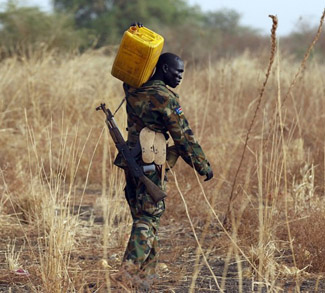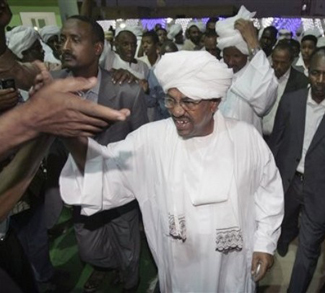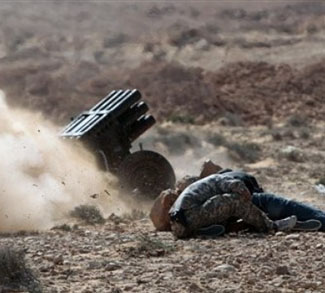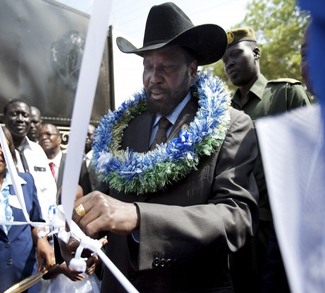The honeymoon period for Africa’s newest state came and went in the blink of an eye and South Sudan finds itself once more on the path to war.
The government of South Sudan needs time: time to build up military strength, shore up foreign support, enact a domestic development agenda, and strengthen its position in disputed border regions like Abyei and Blue Nile.
But it looks like time will be a luxury that it cannot afford, as the government of South Sudan is besieged by internal and external pressures to make a move, any move, even one that is ruinously premature.
Internal pressure stems from a domestic population that, having fought long and hard for independence, expects that things are going to get better now that their goal has finally been achieved. South Sudan has long lagged behind the north in just about every recorded development metric, and there is a widespread expectation that independence will help change this disparity. Yet the ability of the southern government to deliver on these development goals is frustrated by the fact that South Sudan is still economically tied to Khartoum. Although the carving away of the south has taken much of Sudan’s oil reserves with it, South Sudan is still reliant on pipelines that run through the north to sell its product; a fairly terminal dependency given the fact that oil revenues constitute 98 percent of South Sudan’s national budget. Thus, ironically enough, the government of South Sudan is still beholden to Khartoum’s goodwill if it’s ever going to achieve its own short term domestic development goals.
And then there’s the external pressure that stems from Sudan’s military posturing. Khartoum doesn’t want to give its new neighbour a reprieve with which to gather strength that will eventually be turned against it. Rather, Sudan will continue to try and press its current advantage over its reeling neighbor to the south. This is especially relevant given the unresolved portions of the 2005 Comprehensive Peace Agreement like ownership of the Abyei and Blue Nile regions. Unless something changes, it looks like these disputes will be settled by force rather than diplomatic negotiations; perhaps even at the cost of another north-south war. Given the oil wealth of the regions in question and the present north-south military imbalance, Khartoum will continue to press its advantage and endeavor to permanently redraw the map before South Sudan can organize its military into a credible threat.
This context can help illuminate recent events in the north-south conflict. For example, Sudan’s recent attacks on South Sudanese troops as well as its declaration of a state of emergency in border areas are both escalations meant to precipitate a direct conflict with the south, albeit one with presumably limited objectives of securing disputed border regions. On the other side, the government of South Sudan is doing all that it can to de-escalate the situation while saving face, a strategy that explains its recent pledge to the United Nations for an ‘immediate cessation of all hostilities” with Sudan and the promise to withdraw all police forces from Abyei.
On the whole, the situation on the ground indicates an extremely high possibility of wider conflict in the near future. Sudan has a clear military advantage and something to gain from renewed conflict. The government of South Sudan on the other hand will find it hard to keep the South Sudan Armed Forces (formerly the Sudan People’s Liberation Army) from responding to northern provocations, especially given the proximity of the two armies’ deployments in border regions (sometimes as close as 3km).
Geopoliticalmonitor.com’s short term outlook calls for a series of skirmishes that will give way to open conflict and eventually a resumption, however brief, of a state of war between the two Sudans.




